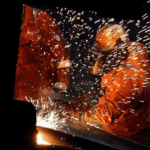A groundbreaking radiotherapy treatment is being developed that promises to treat a wider range of cancers with fewer side effects and in less than a second. Experiments at the European Laboratory for Particle Physics (Cern) in Geneva, Switzerland, could lead to the next generation of radiotherapy machines, potentially curing complex brain tumors, eliminating metastasized cancers, and reducing the overall toll on the human body.
Cern, renowned for its work with the Large Hadron Collider, has shifted its focus in recent years to exploring new cancer treatment methods. The treatment, known as “Flash” radiotherapy, was first proposed over a decade ago by radiobiologist Marie-Catherine Vozenin. By delivering radiation at ultra-high dose rates in less than a second, Flash can destroy tumors while minimizing damage to healthy tissue.
Flash radiotherapy has generated significant interest in the scientific community, with studies showing that it allows for higher radiation doses, particularly beneficial for treating difficult cancers. Tumors often blend into surrounding tissue, making it difficult to target them without harming healthy cells. Flash’s ultra-fast delivery of radiation offers the potential to increase treatment effectiveness while sparing surrounding healthy tissue.
One of the major breakthroughs in Flash radiotherapy is its ability to limit side effects associated with traditional treatment methods. Paediatric brain tumors, for example, can often be cured using radiation, but it comes at a high cost, with many survivors left with cognitive issues and long-term anxiety. Flash aims to reduce these harmful side effects, offering hope for a more effective and less damaging treatment.
Animal studies have shown promising results, with lab mice experiencing fewer side effects after receiving two rounds of Flash radiation compared to traditional methods. Clinical trials in humans are now underway, including studies at Cincinnati Children’s Hospital in Ohio and Lausanne University Hospital in Switzerland, as researchers test Flash’s effectiveness in treating various cancers, including skin and metastatic cancers.
However, challenges remain. Flash treatment requires complex and costly particle accelerators, limiting access to specialized treatment centers. Researchers are now working on developing smaller, more accessible machines, which could make Flash available to more hospitals worldwide.
If successful, Flash radiotherapy could revolutionize cancer treatment, offering more effective care with fewer side effects. Additionally, experts hope it could help address the “radiotherapy gap” in low-income countries, where access to cancer treatment is limited. With Flash’s potential to improve accessibility and efficacy, it could change the future of cancer care worldwide.
















